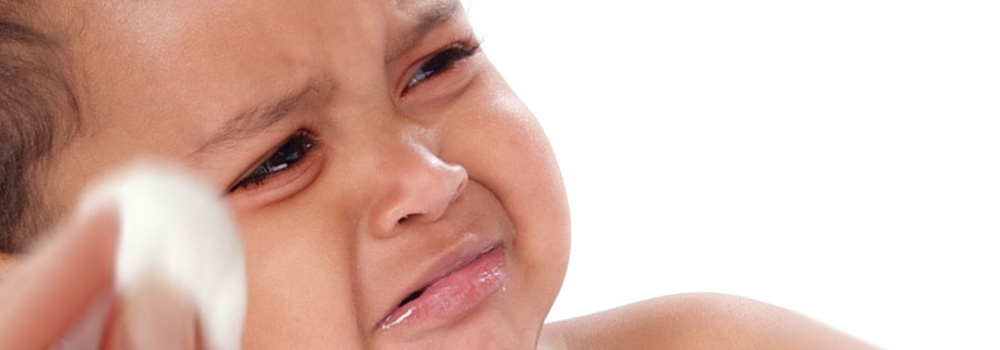‘Sticky eyes’ are common in newborn babies and young children while their tear ducts are developing. You may see some sticky stuff in the corner of the eyes or their eyelashes may be stuck together.
It normally clears up on its own, but you may have to clean your baby's eyes regularly with damp cotton wool. Use clean, cooled boiled water.
Wipe each eye from the corner by the nose outwards. Use a clean piece of cotton wool for each wipe. Remember to wash your hands before and afterwards and avoid sharing towels to prevent spreading infection.


The signs of ‘sticky eyes’ can sometimes be confused with an infection called ‘conjunctivitis’. With conjunctivitis the white of the eyes become red and there is more yellow or green sticky goo which comes back regularly. If you notice this and it continues for more than 24 hours, contact your health visitor or GP. This can be passed on easily, so wash your hands and use a separate towel for your baby.

Some babies have watering eyes. Massaging the tear ducts helps to dislodge tears that have collected in the upper part of your baby’s tear duct, as well as encouraging the tear duct to develop. This can be done by applying light pressure with your clean, index finger and massaging from the outer corner of your baby’s eye towards their nose. Repeat several times a day for a couple of months. If this persists past one year, your baby should be referred to an eye specialist for treatment.
Source NHS choices
1
Is there discharge in the corner of your baby’s eye and do their eyelashes appear to be stuck together?
2
Sticky eyes is a common condition that affects most babies, speak to your health visitor.
3
Use cooled boiled water on a clean piece of cotton wool for each wipe.
It is important to look out for any signs of problems with your baby’s eyes. Routine eye tests are offered to newborn babies and children to identify any problems early on in their development. It's quite normal for the eyes of newborn babies to ‘cross’ occasionally, particularly when they're tired. However, speak to your GP if you notice this happening to your child after three months of age. Left untreated, lazy eye can develop.
Although serious vision problems during childhood are rare, early testing ensures that any problems are picked up and managed as early as possible.




